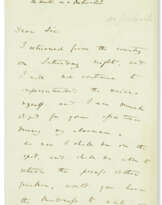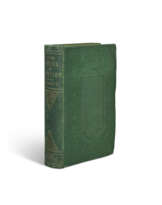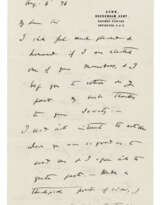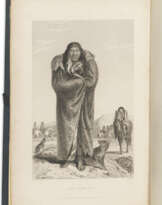ID 887877
Lot 100 | The Descent of Man, William Erasmus Darwin's copy
Estimate value
$ 30 000 – 50 000
First edition, first issue of Darwin’s radical treatise on human evolution, from the library of Darwin’s eldest son William Erasmus Darwin and with a signed manuscript fragment of Charles Darwin's will. While “in the Origin Darwin had avoided discussing the place occupied by Homo sapiens in the scheme of natural selection, stating only that ‘light will be thrown on the origin of man and his history.’ Twelve years later he made good on his promise with The Descent of Man, in which he compared man’s physical and psychological characteristics to similar traits in apes and other animals, showing how even man’s mind and moral sense could have developed through evolutionary processes” (Norman).
The book caused a major furor for placing humans in the evolutionary scheme Darwin had outlined for the rest of the animal kingdom, as well as with its argument for the common origins of all humankind, which struck a major blow against proponents of the idea that the various races of man represent separate species, rather than descending from a common ancestor. Science writer Richard Dawkins has noted that Darwin's supposition that the human species arose in Africa was “typically ahead of its time,” and despite the strong social pressures to think otherwise, “he carefully considered and decisively rejected the idea ... that different human races should be regarded as separate species.” The polygenist view continued to provide support for scientific racism, with scientists like Henry Fairfield Osborn (President of the American Museum of Natural History) funding expeditions to seek evidence of the origins of humans in Asia instead of Africa, until a preponderance of fossil evidence and genetic information decisively proved Darwin correct in the late 20th century.
The present copy bears the bookplates of Darwin’s eldest son, William Erasmus Darwin, named for his grandfather and the subject of Darwin’s own investigations into infant psychology. Darwin kept a journal of the young William’s facial expressions and gestures during his infancy, and would later publish “A Biographical Sketch of an Infant” in the journal Mind in 1877. His findings may have influenced his conclusions in The Descent of Man on the closeness of humans and primates—in addition to studying his own son, he observed baby orangutans at the London zoo. A very significant association copy of one of the most groundbreaking scientific works of the modern age. Garrison & Morton 170; Norman 599.
Two volumes, octavo. Half titles, “Post-script” leaf in volume 2, and 16 pp. ad catalogue in each vol (final leaf of vol. 1 catalogue torn and partially repaired along gutter edge). Wood-engraved illustrations. Publisher’s original green paneled cloth, gilt lettered on spines, black coated endpapers (upper hinge cracked and lower joint repaired in vol 1; in vol 2, joints strengthened). Custom slipcase. Provenance: William Erasmus Darwin, 1839-1914 (armorial bookplate in each volume) – “Fitzgerald” (signature on flyleaf of vol. 2).
[With:] DARWIN, Charles. Lower portion of a manuscript document signed with his scarce full signature (“Charles R. Darwin”), n.p., 27 November 1855. A codicil to his last will and testament witnesses by Catharine Ann Thorley, who worked as the governess to Darwin’s children and Henry Allen Wedgwood, Darwin’s brother-in-law and great grandson of Josiah Wedgwood (toned at margins).
| Address of auction |
CHRISTIE'S 8 King Street, St. James's SW1Y 6QT London United Kingdom | |
|---|---|---|
| Preview |
| |
| Phone | +44 (0)20 7839 9060 | |
| Buyer Premium | see on Website | |
| Conditions of purchase | Conditions of purchase |











